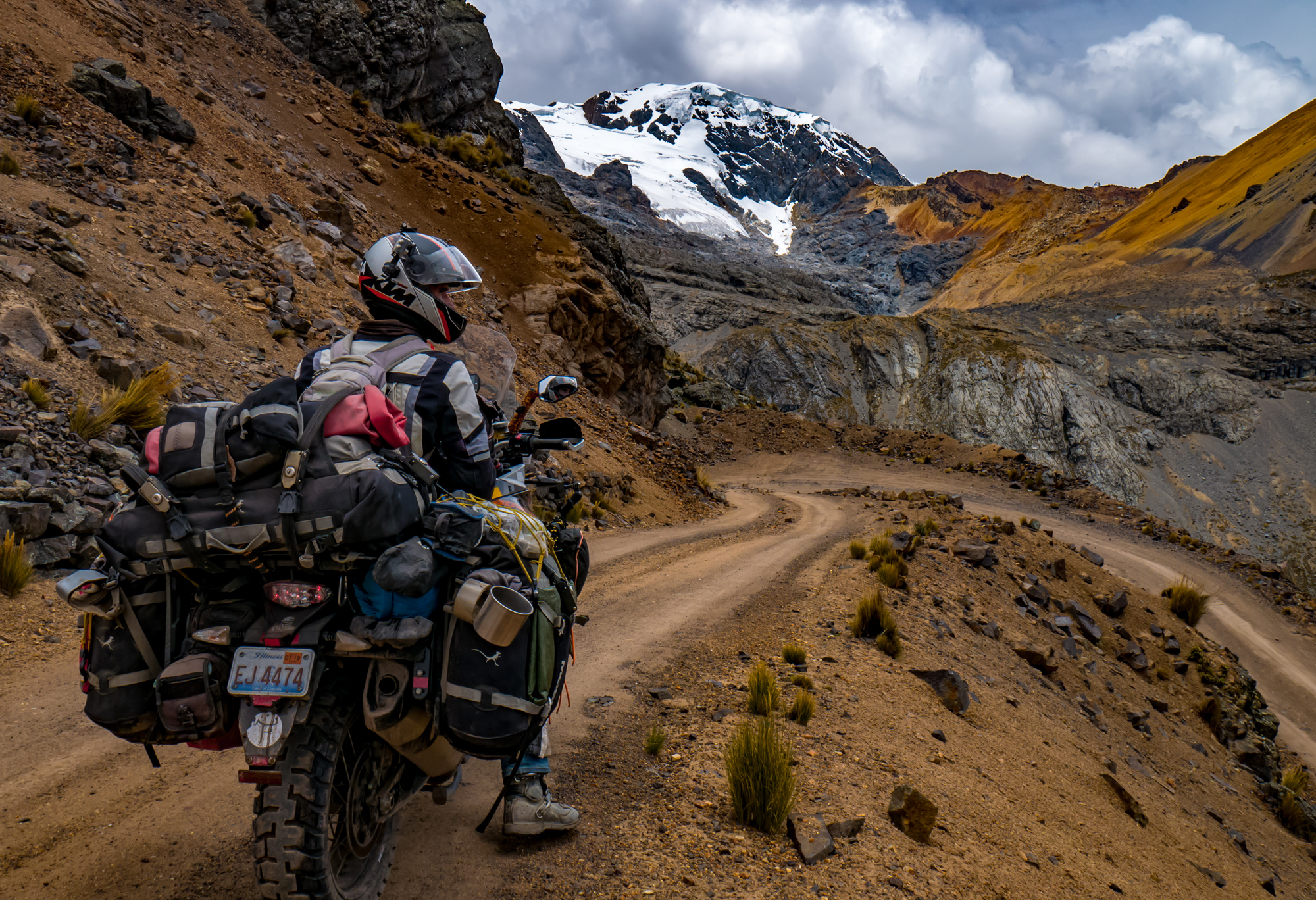Editor’s note: This article was originally published in Overland Journal’s Fall 2020 Issue.
Let’s accept that adventure motorcycling means long, unsupported journeys across the world’s developing nations, lately redefined as the Global South. Overlanding is another word for it, as distinct from regular touring vacations or even gnarly domestic adventures that aren’t hard to have in North America. Get over the border, and things can get challenging just finding a new tire, let alone temporarily importing or servicing a modern motorcycle. Some forward planning and resourcefulness are required.
Stepping outside your cultural comfort zone makes you feel vulnerable and stressed, normally what we seek to avoid. For years, adventurers have tackled this tension—anxiety versus wanderlust—with planning and preparation. Getting your ducks in a row helps build confidence towards a positive outcome. Gearing up over the months, both literally and psychologically, is also a big part of the buzz, as your plan takes shape. Once on the road, that plan will almost certainly unravel a little, but by then, you’ll have discovered a big trip’s sheer momentum will keep your show on the road.
Where to Go and How to Get There
Riding the Global South won’t be as predictable as a touring holiday in New Zealand, but the outlines below broadly summarize what’s possible. Some continents are more accessible than others.
If you’re based in North America, South America is the best adventure motorcycling destination for a first-timer. The accessibility, near-single language, spectacular highway network, lenient entry, and vehicle import regulations, not to mention its rich history and indigenous cultures, all make it a good choice. Add in just about every type of habitat nature can produce, and the fact that it’s wildly different while also manageable, without ever straying far from the Pan-American Highway, to further its recommendation. The flow is interrupted by the need to sail or airfreight around Panama’s Darién Gap. Alternatively, southbound, cut to the chase, and ship directly from Miami to Colombia. When it’s over, Buenos Aires in Argentina is the most convenient place to ship onward.
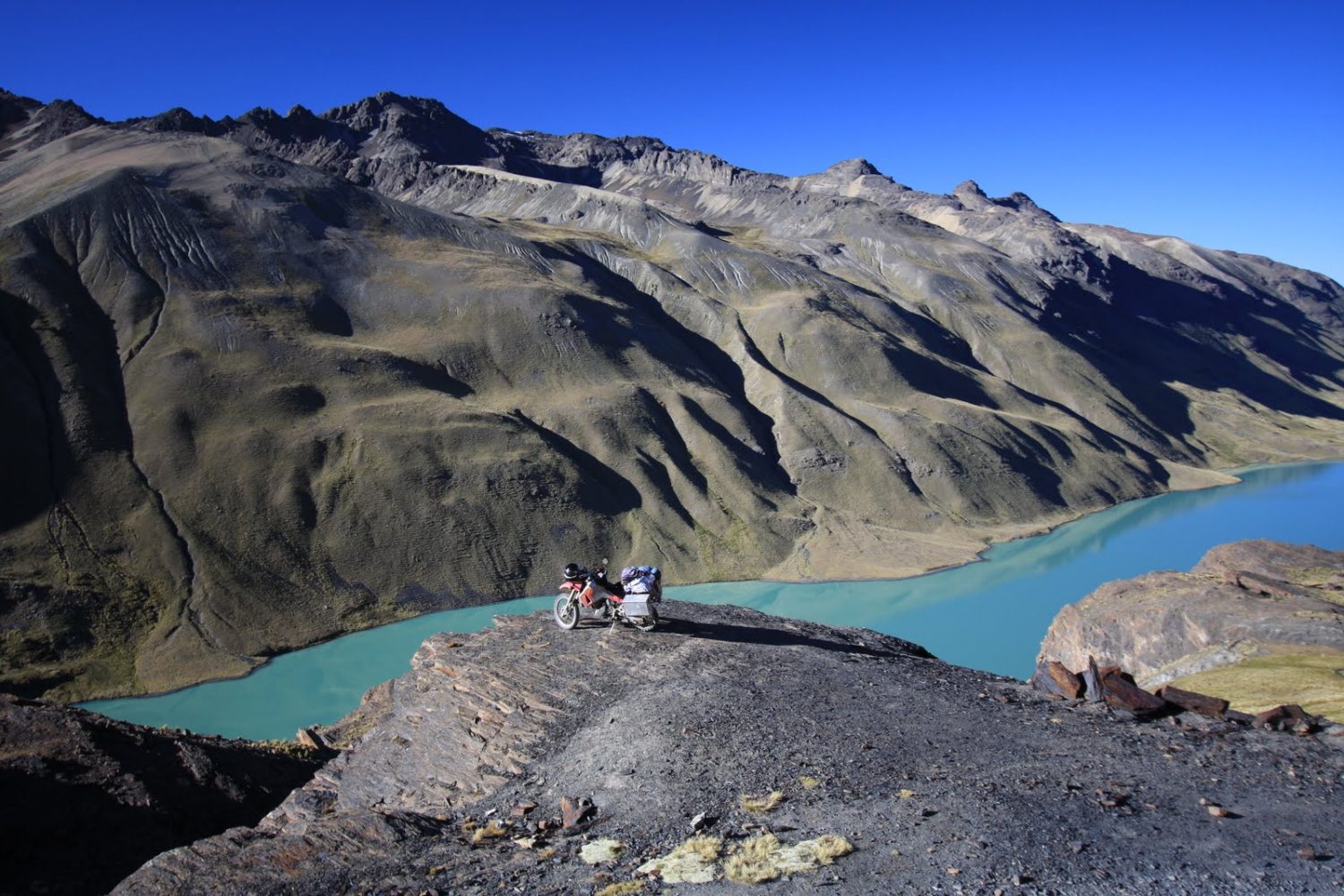
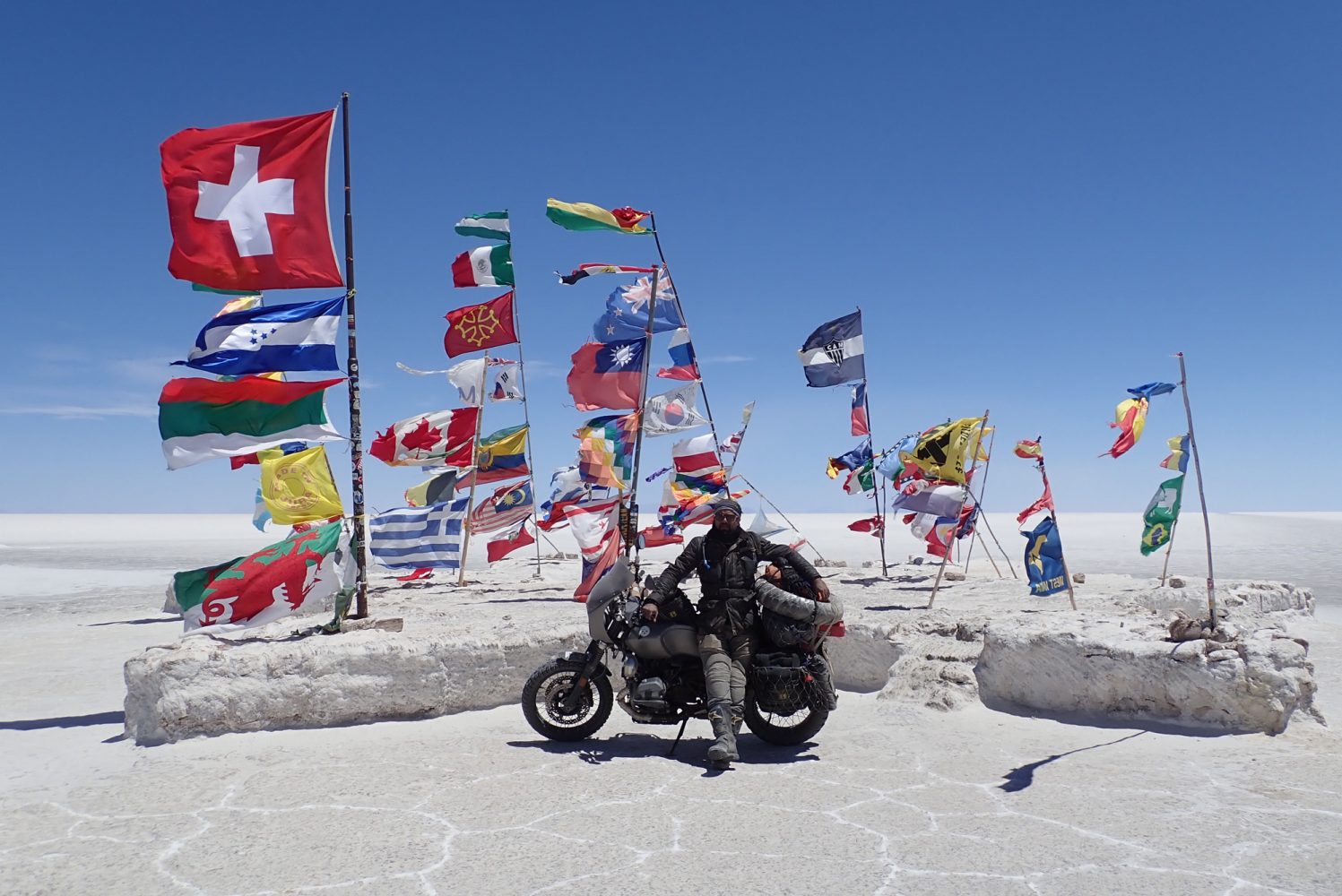
Now that escorted transits of Myanmar are possible, the classic Asia overland route to Singapore has reopened, except for travelers from the US, UK, and Canada who are restricted in Iran. As there are no regular ferries between Arabia (Oman) and Pakistan, a northern route sees Caspian Sea ferries link Europe and the Caucasus with Central Asia, which has become much easier for foreigners. The arid steppes of Kazakhstan lead to Russia (optionally via Mongolia, an adventurer riders’ favorite) for Vladivostok and a ferry to South Korea’s shipping hub of Busan. Or, with months of preplanning, from Kyrgyzstan or Tajikistan, you can slip through Xinjiang in western China (escorted or trucked) and cross the Karakoram into Pakistan for India and Indochina. Kuala Lumpur in Malaysia is Southeast Asia’s shipping hub.
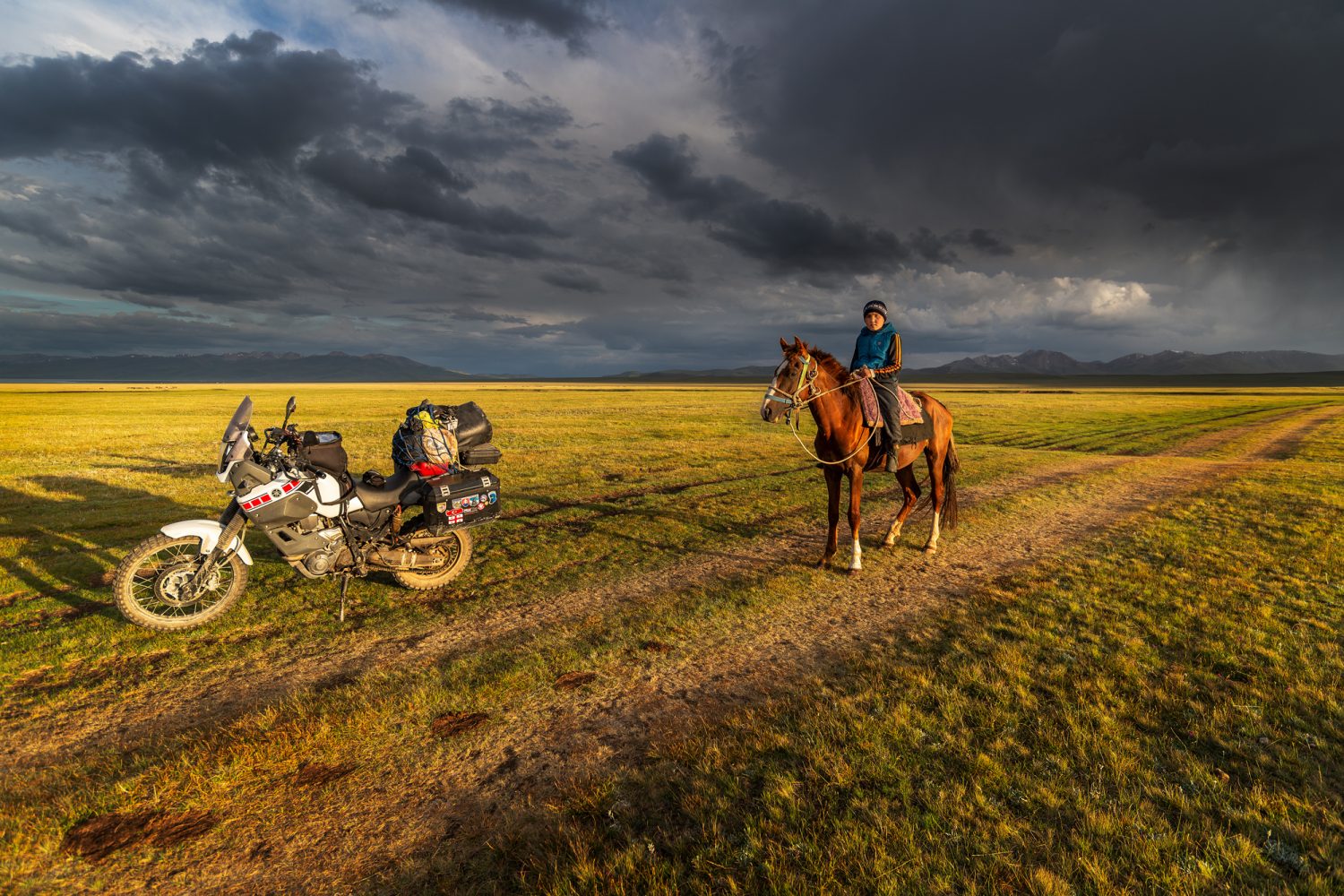
Many round-the-worlders skip Africa, but from South Africa, staying east of the Congo, you can reach Uganda without undue complications. Egypt (carnet required, see below) is the end of the road, though ferrying to Jordan for Israel, then Europe, or even Sudan to Saudi could be an answer. On Africa’s Atlantic side, ferries leave Spain hourly for Morocco from where it’s a long road along the Saharan rim to Mauritania, followed by a transit of West Africa. Here, current tensions force you south across additional borders where onerous visa requirements continue right across equatorial Africa until you’re out of Angola.
Choosing a Motorcycle
Besides being a symbol of your individuality and belief in personal freedom, you’ll want a mule that performs doggedly, day in, day out—a machine that will get you there and keep you moving at a fully outfitted cost you can afford, with a sustainable servicing budget once on the road. How will it manage the rough and tumble of the overlanding life lashed to a ferry deck, hammering over washboard trails or ruined asphalt, topped-up with low-grade gas, or watery oil, dust, and vibration, far from specialist servicing and consumables?
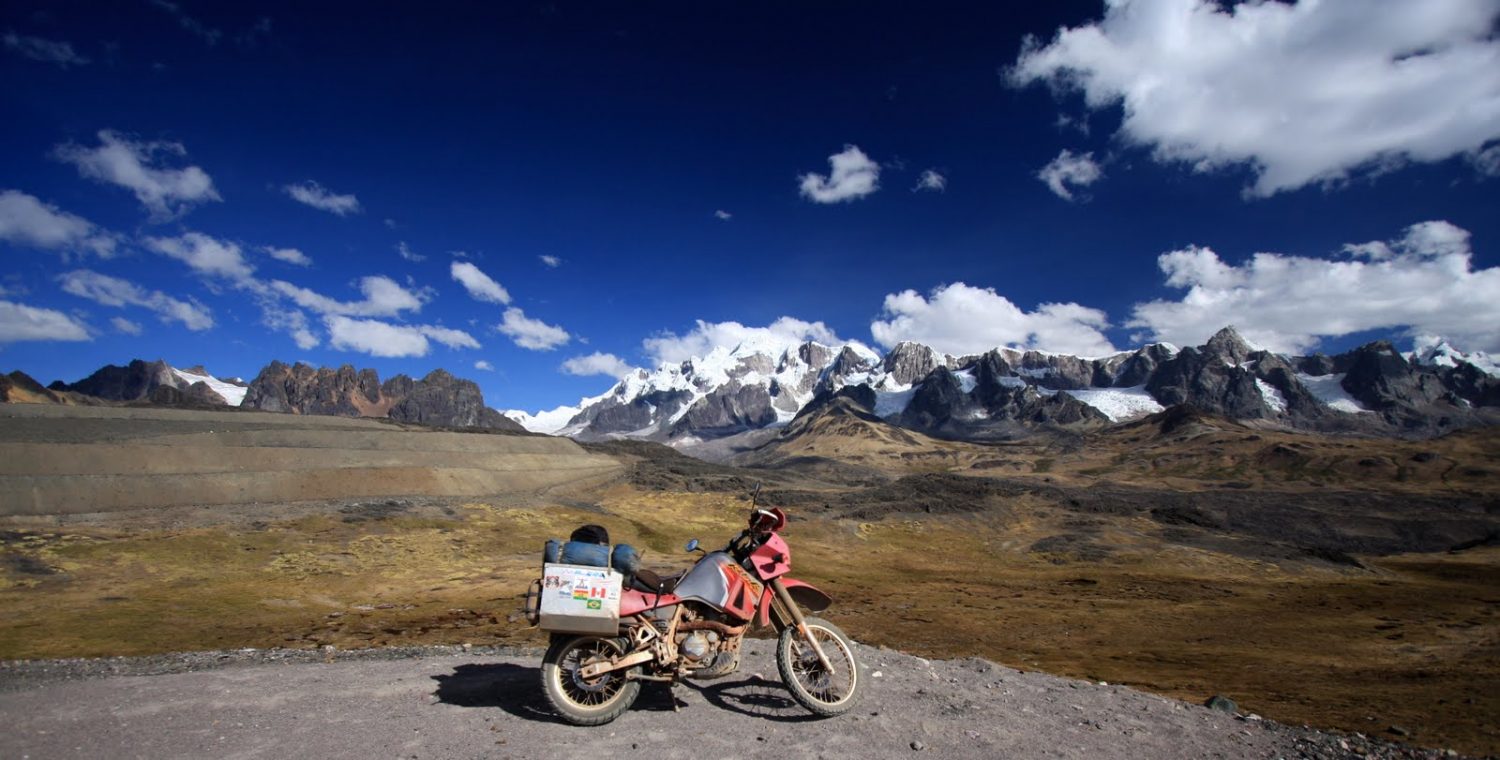
As the KLR650 has proven, these qualities are not limited to big motorcycles. Particularly on the backroads of Africa and Asia, you’ll rarely exceed 60 mph, nor will you be munching the miles as you might do on a mission to Prudhoe Bay. Unless you’re two-up, the benefits of more than 70 horsepower will be rarely appreciated, while weighing nearly 600 pounds, doing less than 45 mpg, and wearing out expensive consumables might hold you back. Out in the world, locals ride overloaded and under-maintained 125s, but they rarely stray far from home. For transcontinental rides, a 250cc motorcycle is a practical minimum. A 250 dual-sport is a machine that’s light enough for anyone to tackle any trail, at the cost of effortless highway cruising comfort.

Unlike a weekend burn-up on your GSX-R or a dirt bike, you’ll be far from dependable healthcare for both you and your machine, so you’re not going to be pushing the ragged limits of performance. Your priority is to survive because the consequences of blowing it are what puts the “AD” into “Adventure.” But because the nature of motorcycling is more engaging than driving, it’s simplest to have the motorcycle choose the ride. For travel, it should be the other way round. Ask not where you can go on your cool motorcycle; ask which motorcycle is suited to those places.
It can help to define the abject opposite of a travel bike: something with a fuel range barely into three figures, a five-figure price-tag, a crippling riding position, and rock-hard suspension. You can add a limited luggage-carrying ability and a frequent maintenance schedule. It has to be a compromise, and a CB500X or F 750 GS fits the bill. However, like your jacket, it also needs to make you feel great to put on each morning.
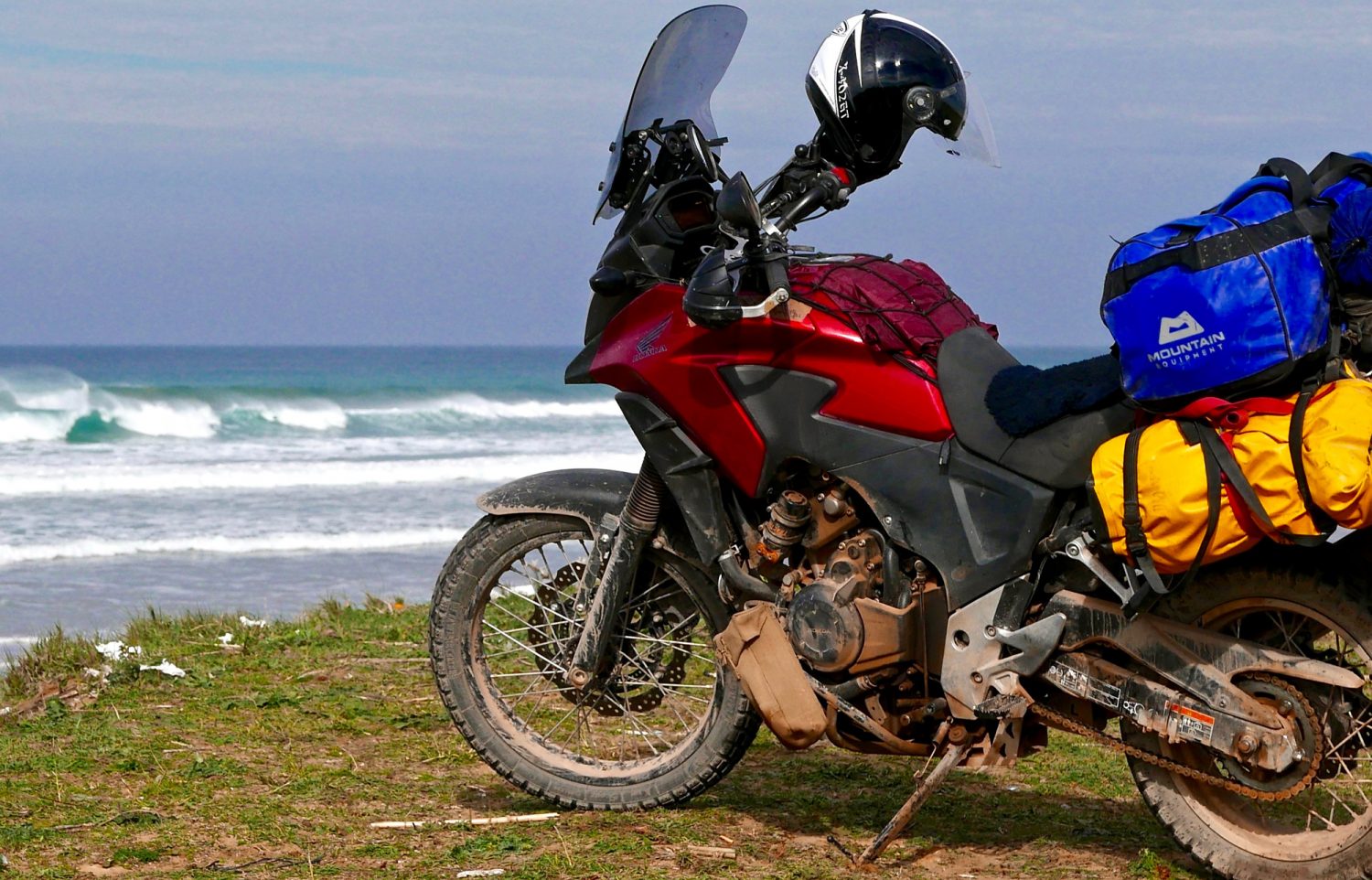
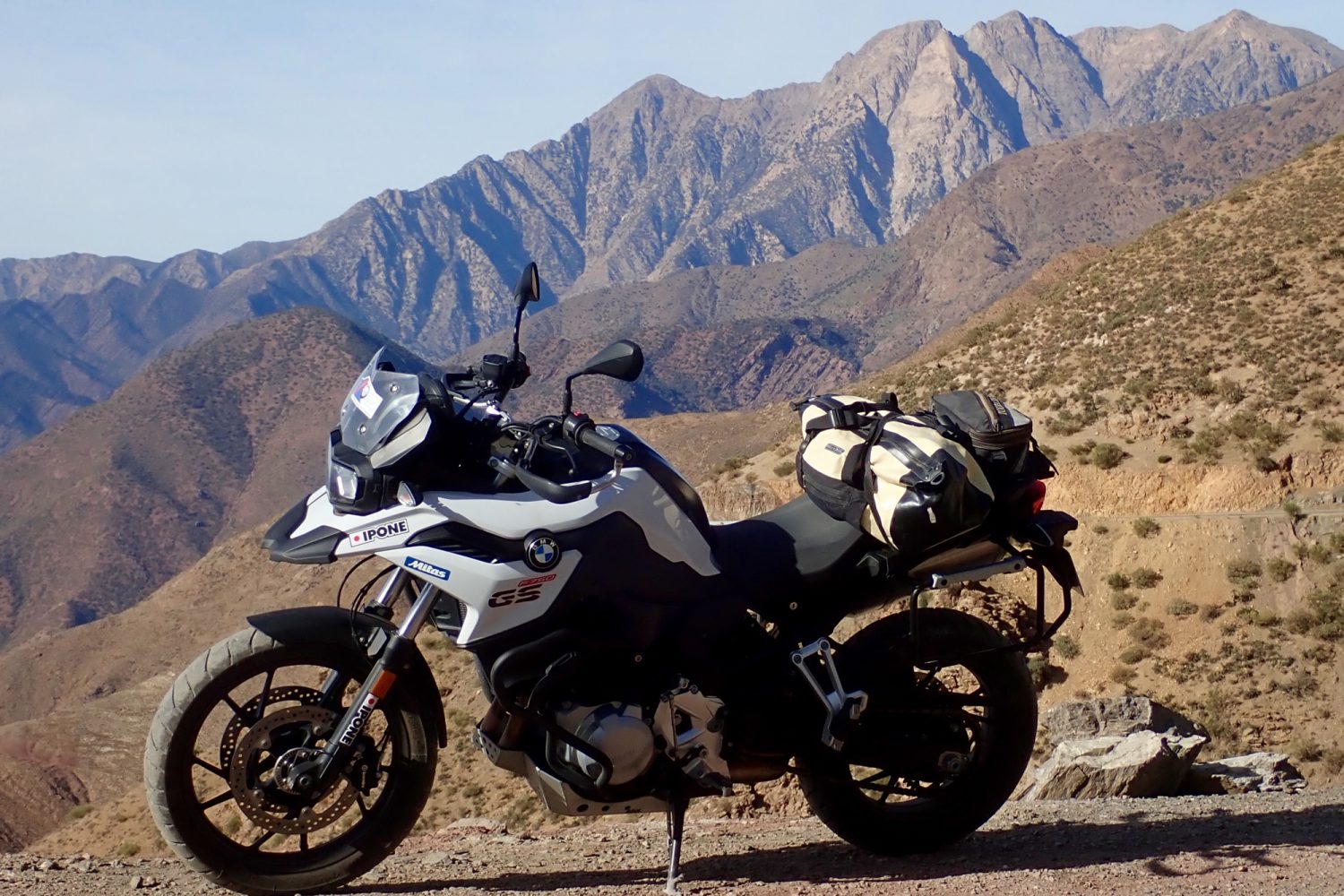
What counts is this:
Your Marque and Image Preferences You love your Multistrada. It’s going to be a Multistrada. End of discussion.
Your Itinerary Or specifically, do you prioritize off-highway exploring? Adventures are easily found there.
Weight and Seat Height Related to the above and possibly your height, age, or fitness. Few riders return with heavier bikes and more baggage.
Comfort and Weather Protection The brain may forever be the mindset of a 22- year-old, but the more aged your bones, the more important protection becomes. Fatigue leads to poor decisions.
Fuel Economy and Range A bike may have a huge range; however, if fuel economy is average, it will weigh a ton when full.
Mechanical and Electronic Simplicity Boomer-era riders will know how stuff works—only on boomer-era motorcycles. Remember, five-star sealer support will be lean. You’re on your own.
Build Quality and Reputation for Reliability Say what you like, but the Japanese marques still dominate here.
There are a few more factors, but how you order the above ought to help you find a sweet spot between a Superleggera and an RM250 with lights. That might be a GS 12, or it might be a DR650. [Dave smith dr650]
Outfitting Your Motorcycle
Pick a machine with the right engine for you, and the rest ought to follow. Programmable electronic fuel controllers are the modern equivalent of meddling with carbs—some lean-running motorcycles may benefit. EFI is an example where electronic injection complexity has improved on a century of carbureted complexity, delivering smoother running at all revs and elevations, as well as superior fuel efficiency. It means fitting bigger tanks has become less of an issue. Ridden at a steady pace, a modern motorcycle with a 4.5-gallon (17-liter) tank returning mid-50s mpg (23 kpl) will achieve a range of up to 250 miles (400 kilometres). The KLR650, a WR250 with an IMS tank, Enfield’s Himalayan, the CB500X, V-Strom 650, 1-liter Africa Twin, and R 1200 GSA will all manage this. So will a KTM 790 and the new Husky 701 LR. With the global proliferation of motor vehicles, there are few places in the world where you’ll need more than 400 kilometres unless you’re going out of your way for it.
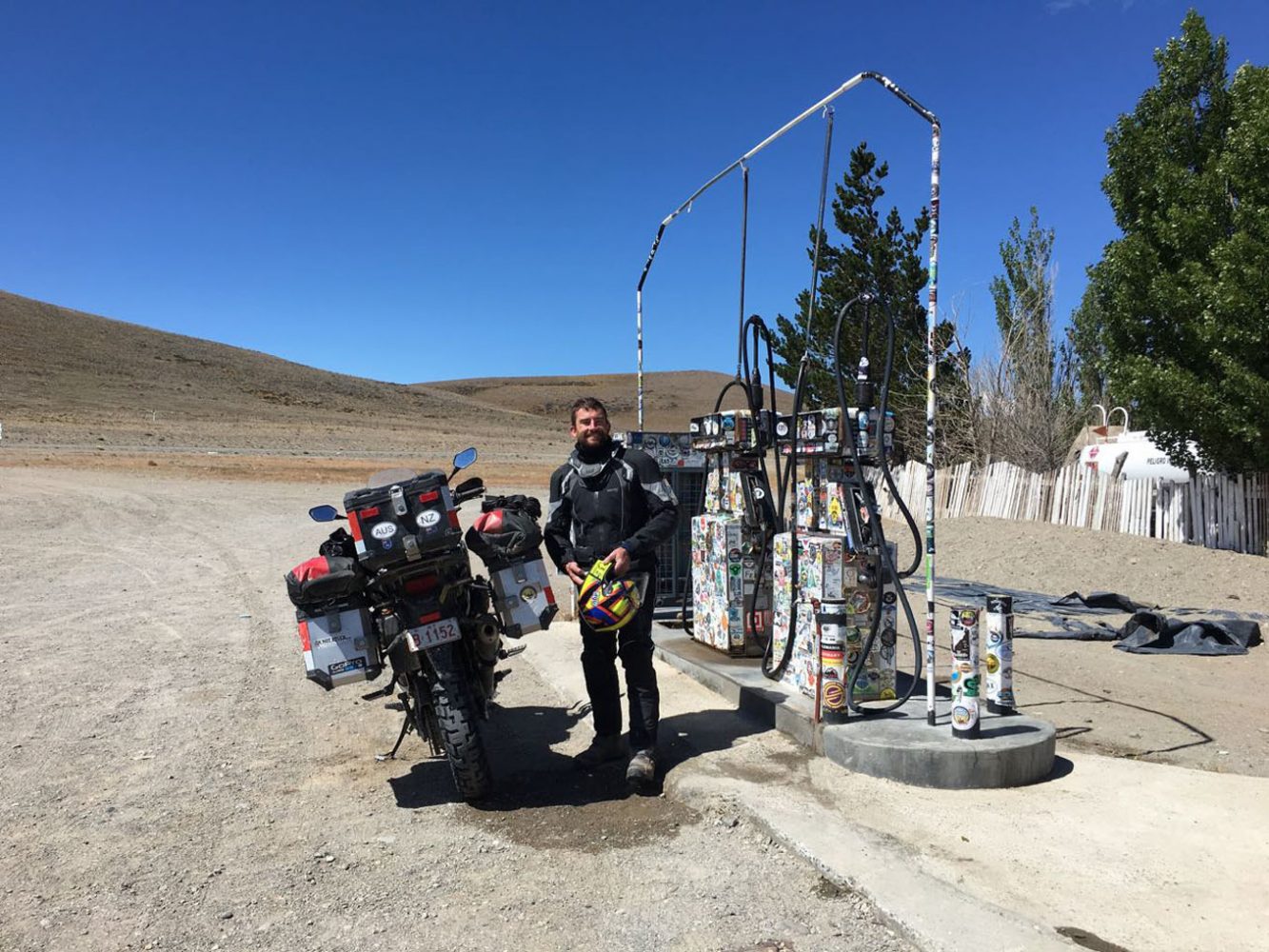
Protection includes proper, alloy-framed handguards with plastic shields. Replace skimpy pressed-steel sump guards with thicker-alloy items that reach up to protect water pumps and oil filters; steel crash bars add more engine case protection. Accessory radiator grills aren’t always needed, but if fitted, need some spacing to maintain airflow at low speeds. Whichever way up your forks are, neoprene socks or old-school-style rubber gaiters help preserve fork seals.
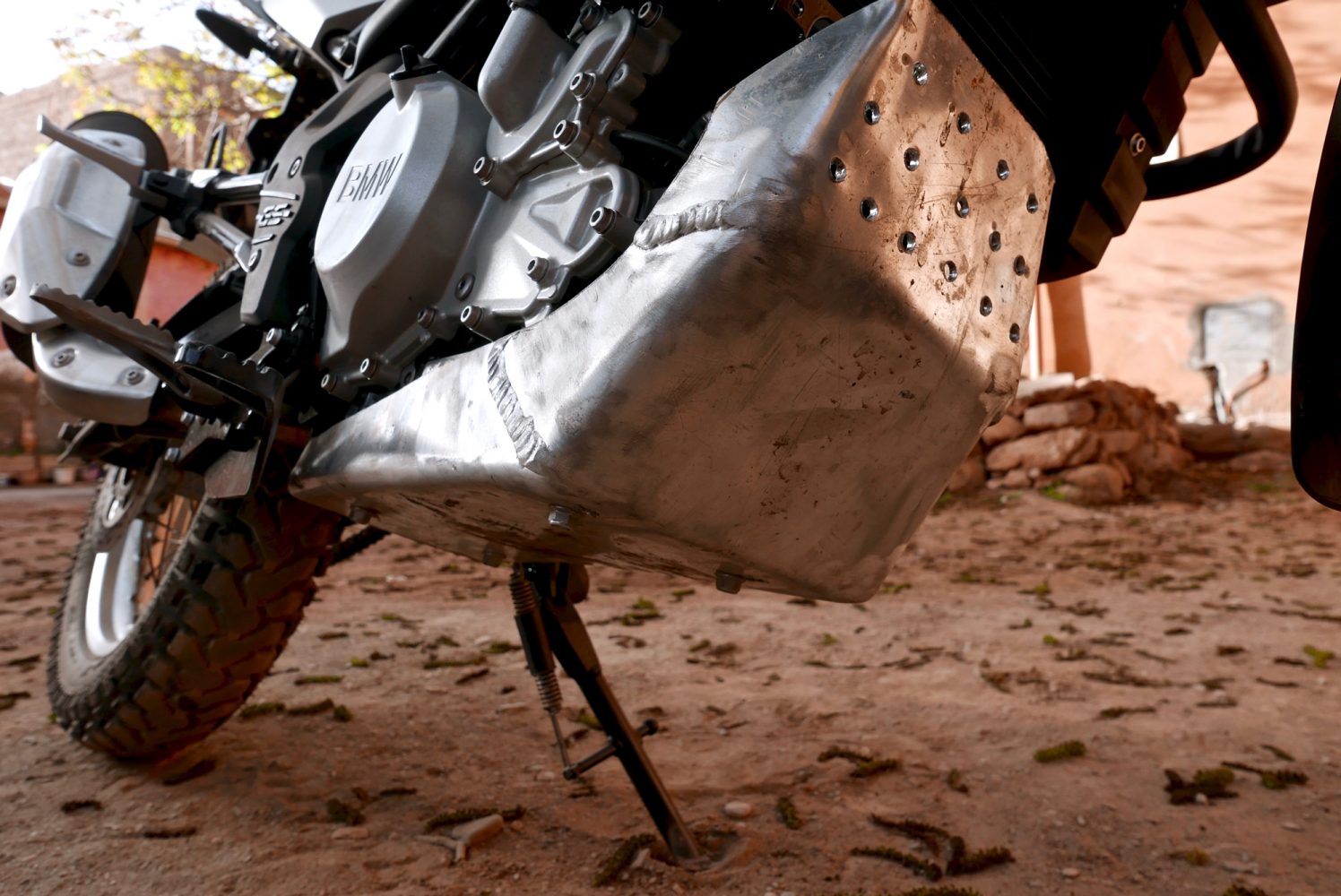
Your motorcycle may have a fairing and screen, but the latter is often left wanting as one size cannot fit all. Tool-free adjustment is appearing on the ADV flagships; otherwise, MadStad, Puig, and MRA are some who produce adjustable replacements as well as windshields for naked bikes. Along with a comfortable saddle—again, subjective or a lottery—this will all help reduce fatigue on an endeavor where you need to be on top form.
Modern digital displays or more road-oriented machines provide an array of data, including converting speed and fuel mileage to metric readings you’ll appreciate abroad. One thing worth knowing, especially with air-cooled engines, is the temperature. Where or what you measure doesn’t really matter; a reference figure is what counts, so when that’s inexplicably exceeded, you can slow down or investigate. Center stands have become optional accessories, but for all the obvious maintenance, repair, and redundancy reasons, fit one for your big ride, especially if you’re running tubed tires or a chain without an automatic oiling device.
The suspension is where otherwise great travel bikes like Honda’s CB500X fall short. Add a travel payload and rough roads, and the stock setup soon loses composure, but springs or shocks are easily replaced. One thing you’ll value is a preload adjustment knob on the shock (often hydraulic and found on bigger bikes).
With tires, longevity, all-weather capability, and all-surface grip is a tall order, but a ratio of 80/20 road/dirt is probably way more than most overlanders manage—in distance if not in time. Tires from East European brands like Heidenau, Mitas, or Motoz vie with the Karoo, Anakee Wild, Trailmax, and various Trail Wings from the better-known marques. Some will last as long as a regular Tourance or Anakee, which, no matter what they claim, are road tires suited to powerful, heavy machines. As long as conditions are dry and you ride appropriately, such tires manage fine on firm sand, rocks, and gravel.
Far more valuable in terms of blowout safety, long life, and two-minute roadside repairs are tubeless tyres. With cast alloy wheels, they’re a given, but tubeless wire wheels (spokes) are only on some adventure-style flagships, sometimes as 21-inch front wheels. Talking of front-wheel sizes, once a bike exceeds 500 pounds, for most, the benefits of 21-inch over 19, or cast versus spokes becomes academic. Tire tread and rider skill count for much more, but the benefits of tubeless tires trounce all when you get a flat in Lima’s rush hour or a Punjabi monsoon. On the same theme, electronic rider aids are ever more sophisticated, but built-in TPMS (live wireless tyre pressure monitoring system) is still a luxury or an option. Luckily, aftermarket TPMS kits are inexpensive and easy to retrofit, providing the long-absent metric on any motorcycle.
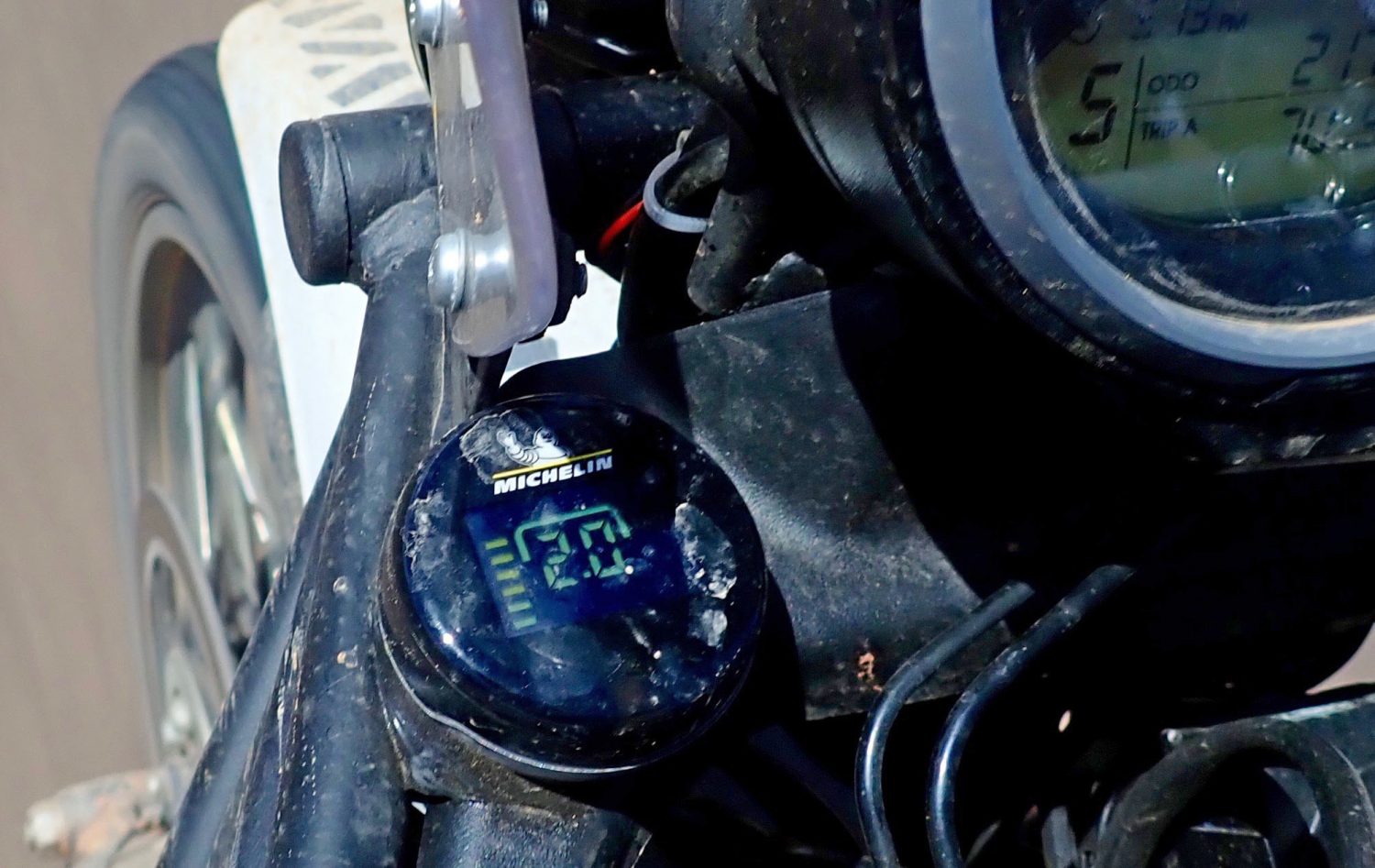
Baggage is often oversimplified to hard alloy cases versus fabric bags. Many riders combine both, and hard cases also come in more robust polymers. Others just strap on a kit bag and hit the road. As it is, a motorcycle can carry little more than what you’d check for an international flight. You’ll soon realize the roads of the Global South have the same gas, food, lodgings, and other services, though, just maybe not in the range and quality you’re used to. One discovery you’ll make is that having everything you own at arms’ reach is actually everything you need. The memorable encounters and mind-boggling views along the way all come free.
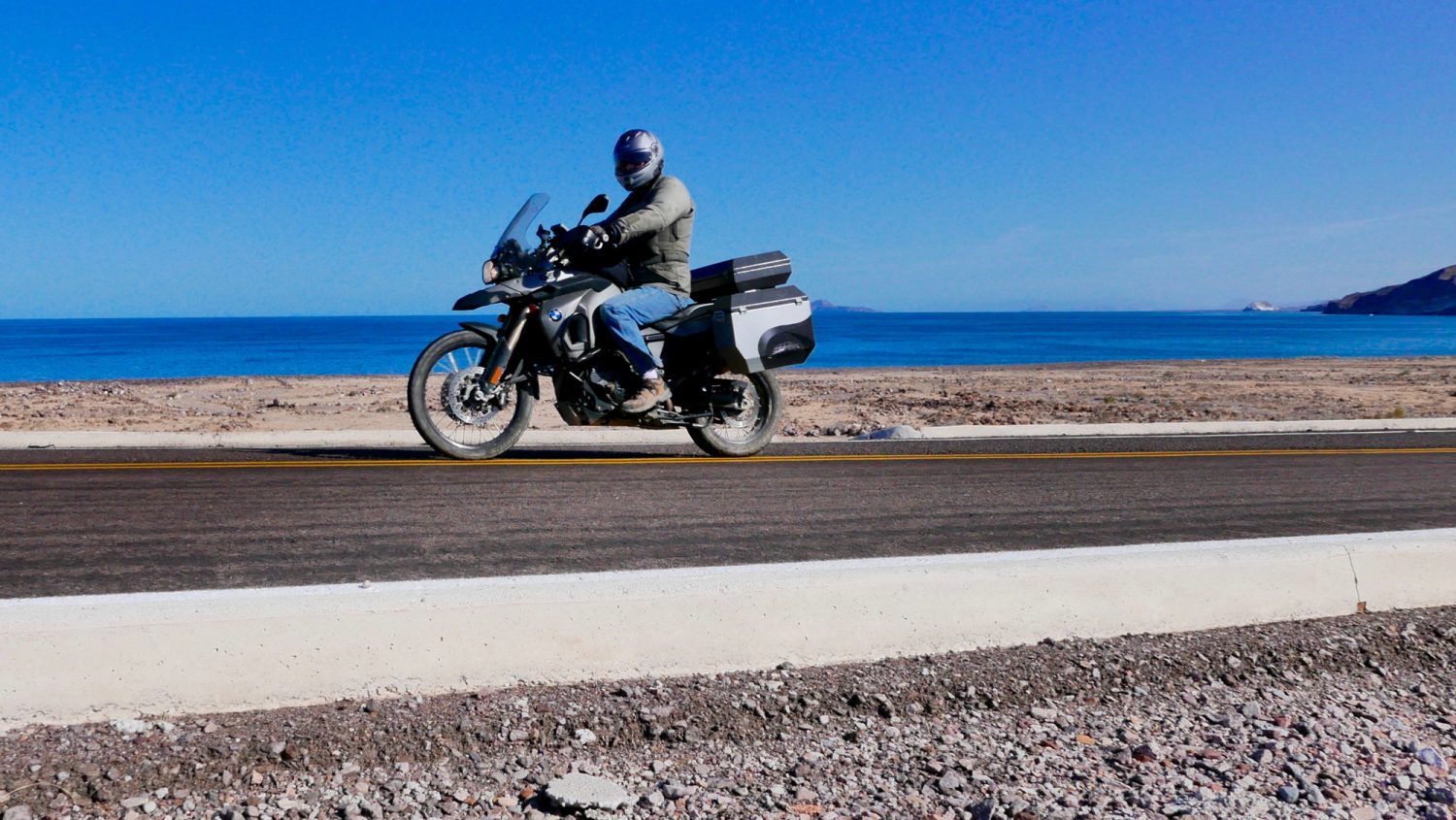
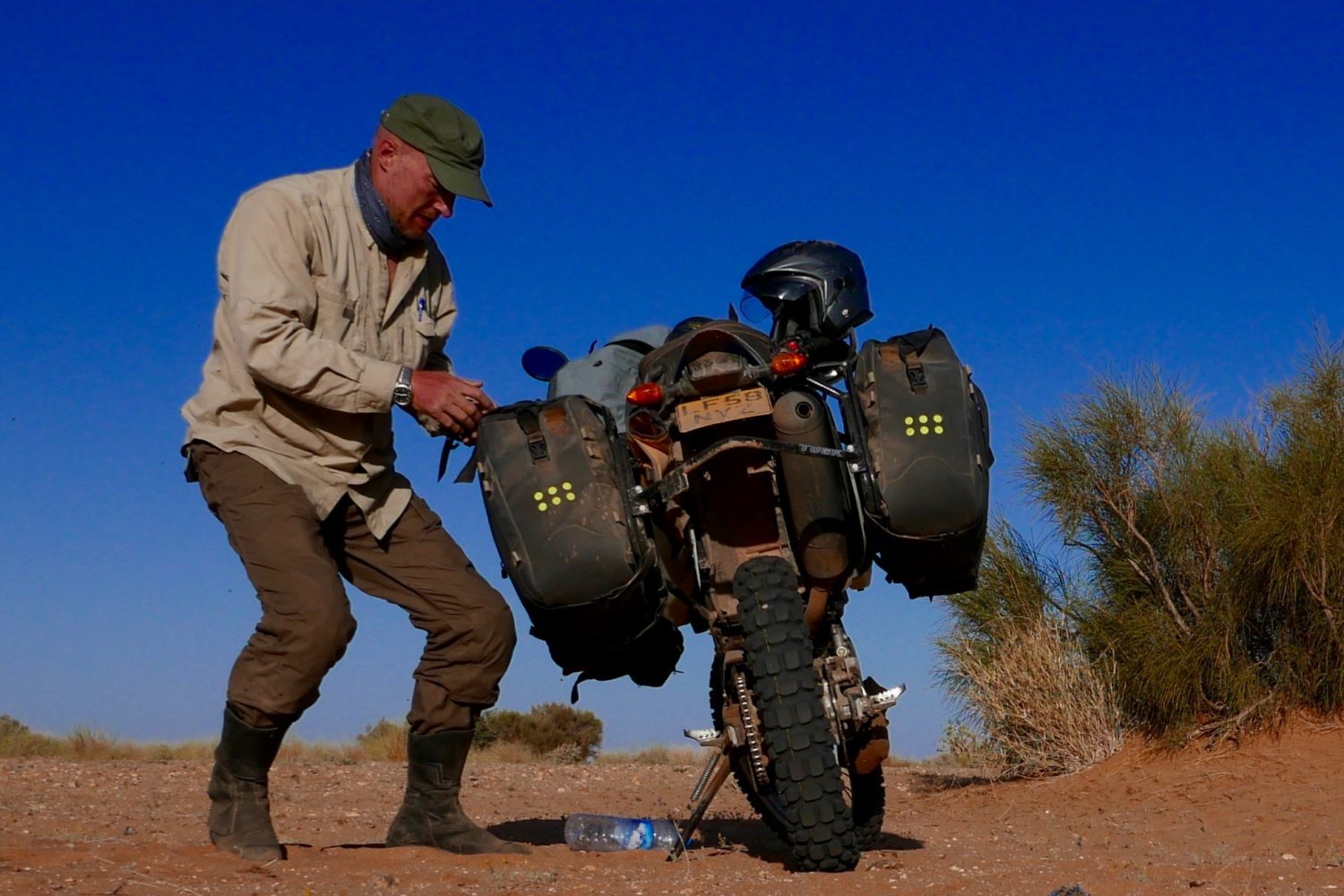
Saving weight is often the justification given, but unless you can be sure your soft bags won’t shift and then melt or catch alight on a hot silencer, a rack, or some sort of metalwork is essential to eliminate movement on rough trails. Rackless systems like the Giant Loop Coyote are more suited to short excursions rather than months of travel. Certainly off-road, where slow-speed falls are more frequent, soft baggage—rackless or otherwise—does less damage to itself or your lower limbs.
Documentation and Shipping
The documentation needed to ride the world adds up to ID (a passport and a driver’s license) and your motorcycle’s title or other ownership papers. Outside of Latin America, driving licenses are rarely asked for. Every border will want to see a passport and vehicle ownership papers, though, plus a good excuse or supporting paperwork if the details don’t match. Police stamp your passport, typically allowing a stay from 30 to 90 days, and customs issues a temporary vehicle importation permit (TIP) that may last as long. The list varies, but you’ll struggle to enter Egypt, Iran, Pakistan, and India without a more complicated and costly internationally recognized import permit called a carnet de passages en douane (CPD) that needs organizing in advance. (In North America, it’s Boomerang Carnets, cpdcarnet.com). Fascinating though they are, you can see a lot of the world outside these four countries (and as mentioned, Iran has other issues).
Some borders still demand yellow fever vaccination certificates, and most riders will see the value in other vaccinations, as well as travel and health insurance to cover them for worldwide motorcycling and not just backpacking.
At some point, you’ll need to cross an ocean; sea freight is best done at the end of a big trip from a busy port once you’ve flown back home. Airfreighting may cost double but takes days, not weeks, and is often easier than arranging a container full of bikes or LTL cargo.
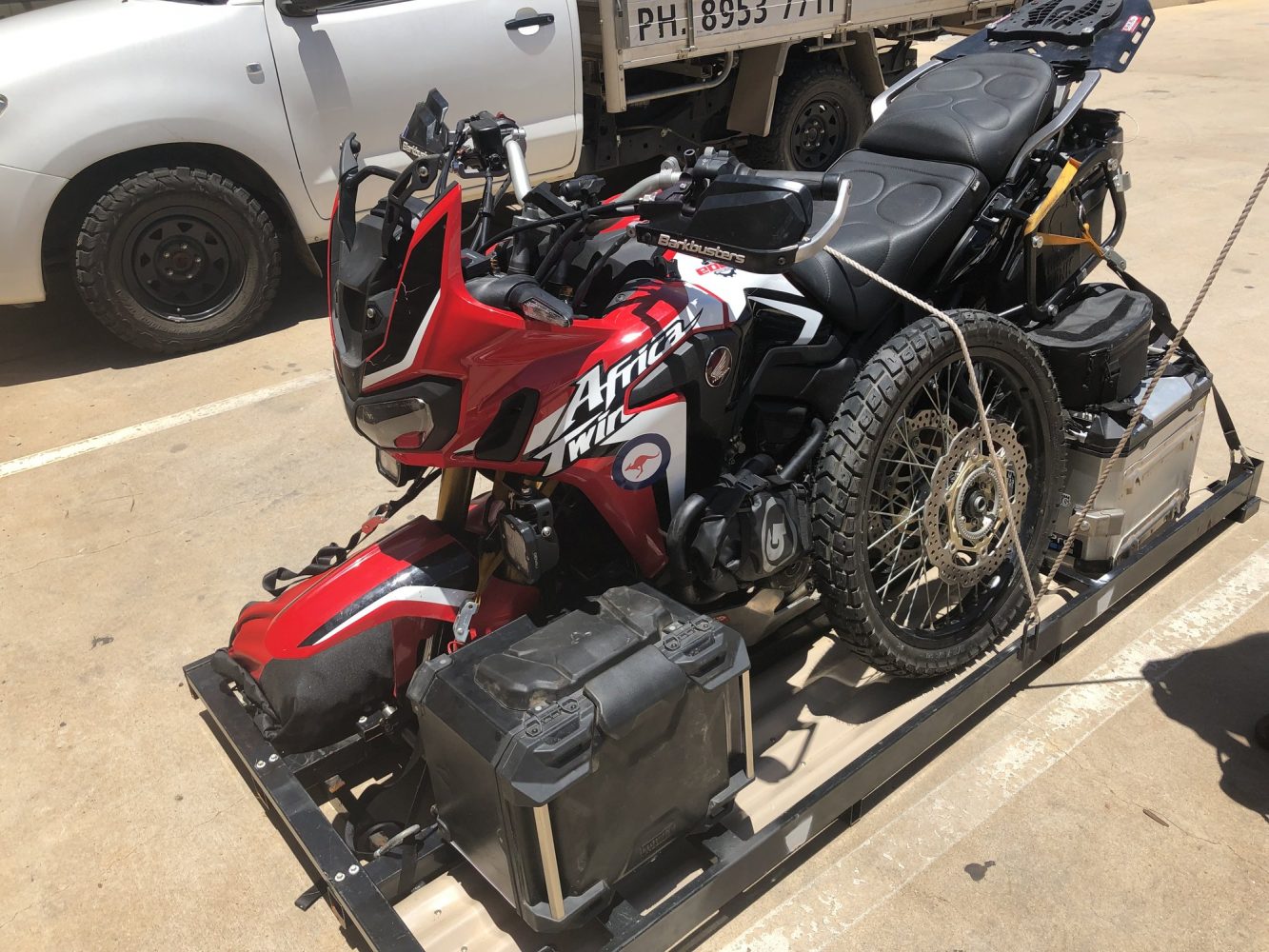
Just as it was when the first motorcycle adventurers took off across the steppes, jungles, and cordilleras, the learning curve for any first-timer is steep and slippery. But there’s never been a better time to head off overseas [excepting extenuating circumstances such as a pandemic]. You don’t have to sell up just yet: tours can offer a taste, and rentals (especially in South America) can save weeks and thousands of dollars. Online information has democratized the pursuit, but the rewards remain hard-earned and visceral, if for no other reason than the psychic exposure is more keenly felt. Surviving off your wits and free to make your own decisions, you feel alive and engaged. It’s addictive, and because humans are adaptable and tend to favor optimistic recollections, you’ll look back on your adventure as among the best experiences you’ve ever had, as well as knowing exactly how to do it much better next time.
The 8th edition of Chris Scott’s Adventure Motorcycling Handbook is now available. In print for nearly 30 years, there are a hundred extra pages, and the fully revised new edition for 2020 is even more comprehensive.


